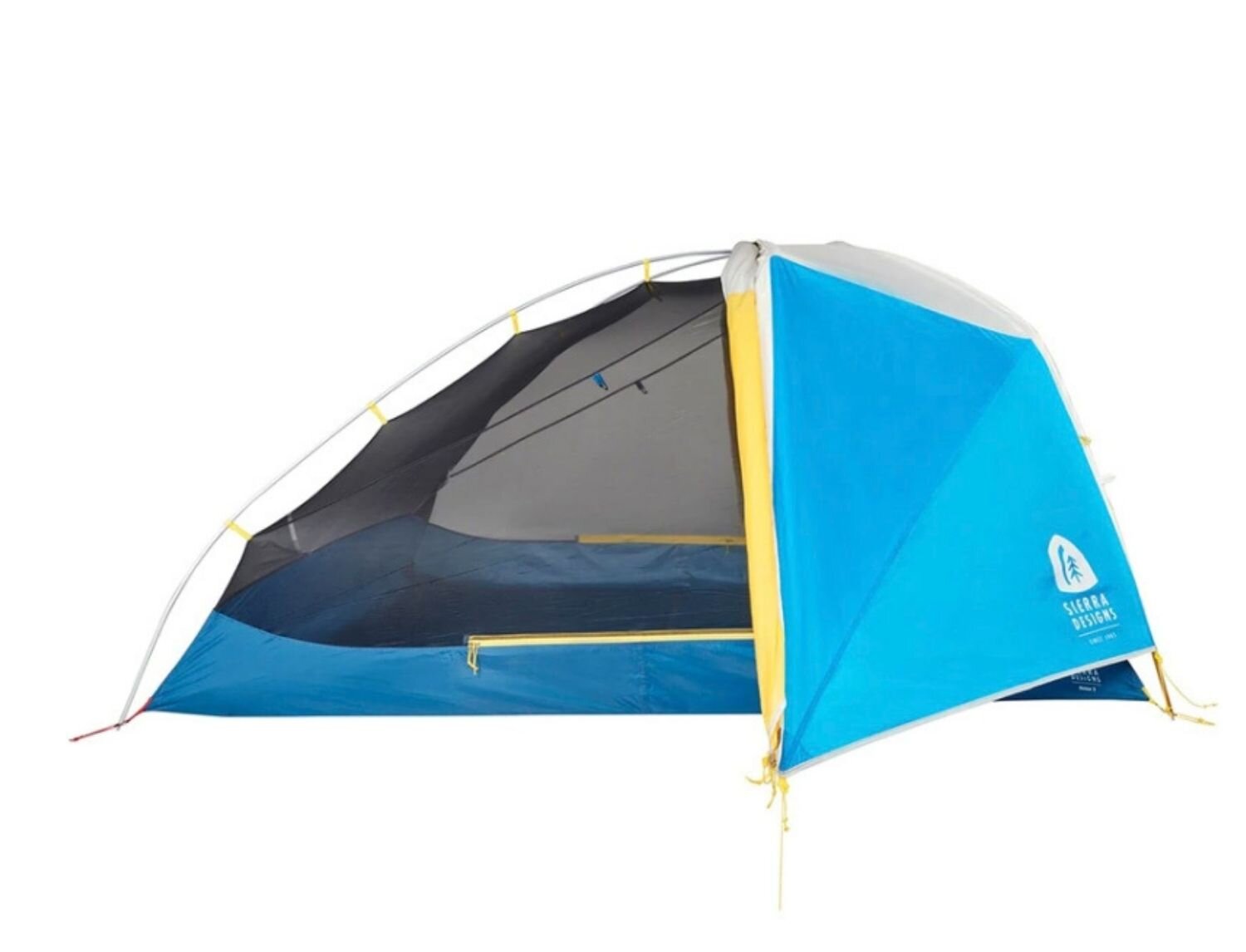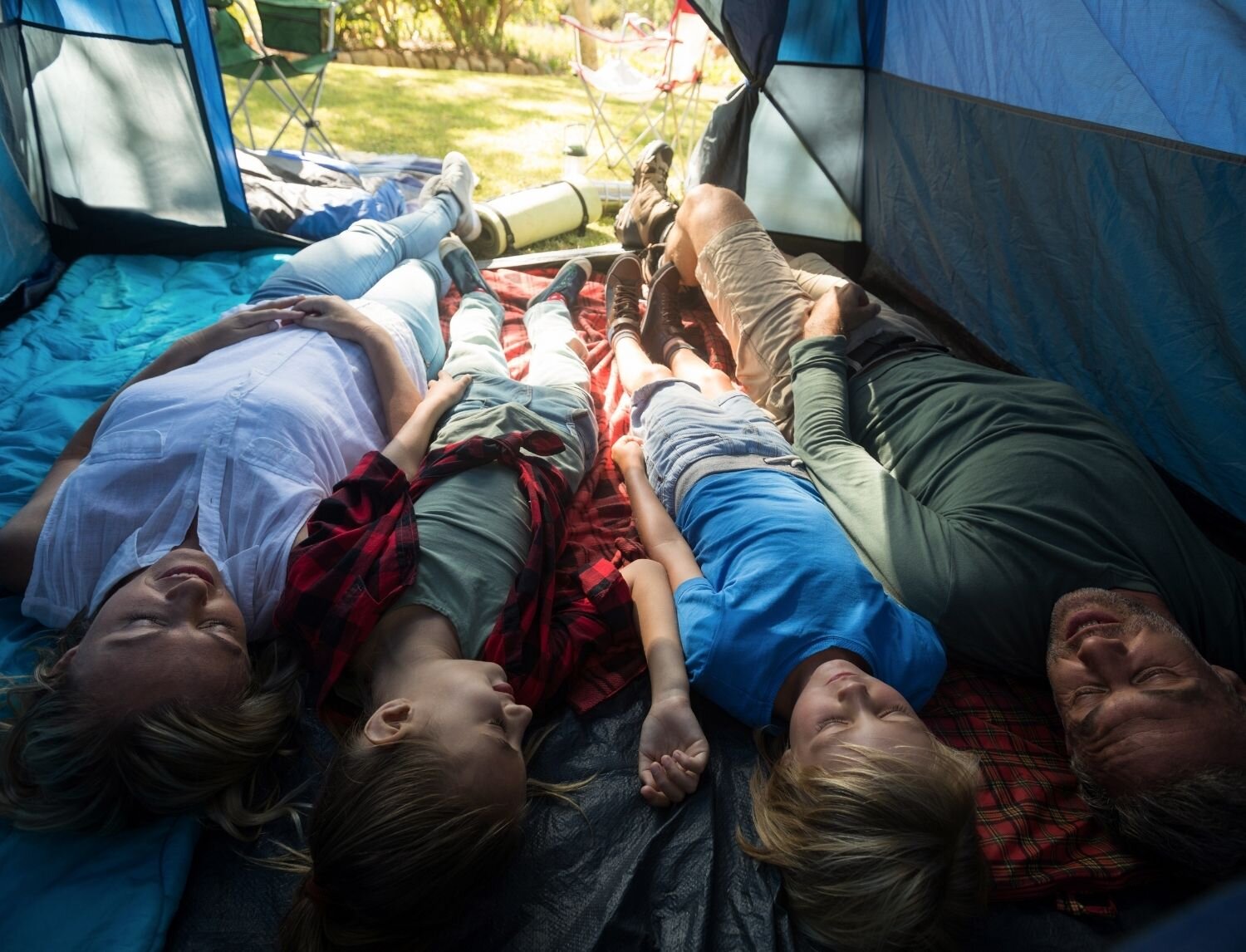Best Tents for Family Camping: A Buyer’s Guide
Tents are the backbone of any family camping adventure. The day starts and ends from your tent, so making sure you have the best tent for your family is crucial. Nothing ruins an adventure faster than waking up in a soaked sleeping bag, or not sleeping at all because you can’t move in your overly “cozy” tent all night.
It can be overwhelming to choose a tent for your family. Whether you’re shopping for your first tent, you’re sizing up because your family has expanded, or you’re ready to take the plunge into backpacking with your kids, you will find so many options.
At WildKind, we want to walk you through all the things to keep in mind when buying a new tent, and like always, offer our members discounts to high quality family tent options.
WildKind has partnered with Sierra Designs for the month of January, which means 30% off sitewide for WildKind members through March 31st. Check the announcements page in the WildKind member portal to find your code. Members are also automatically entered for this month’s giveaways: one family will win a Sierra Designs Nomad 4 tent, and two families will be outfitted in Sierra Designs down booties (up to four pairs per family).
As I put this guide together, I am also helping my first grader with online learning (yeah for multitasking). He’s learning about “question words” - who, what, when, where, why, how. So, let’s throwback to elementary school, and allow the question words to guide our search for the perfect tent for family camping.
What: Types of Tent Camping
The absolute first step towards owning the best tent for your family is to determine what your family plans to do with it? Will you car camp, backpack, or perhaps a mix of both?
If you plan to take your family backpacking, then focus on the packed weight and packed size of the tent. After all, you will need to fit this tent in your backpack, and will have to carry it on your back - in addition to all your other supplies. The ideal backpacking tent packs down small and does not weigh much - think 2.5 pounds per person or less.
If you primarily on car camping, but want to experiment with shorter backpacking adventures, or at least short hikes into remote camping sites, look for tents on the lighter side, which also offer features like fully removable rain flies and vestibules. Any way you can shed unnecessary weight will help, whether you let someone else carry those pieces or leave them behind when weather allows.
For car camping, still consider the packed size of the tent as you will need to make sure you have space for it in your vehicle. Otherwise, when it comes to car camping, tent weight does not matter much.
Who: Sleeping Capacity
Tents usually have a number as a part of their name: Sierra Design’s Nomad 4, REI’s Kingdom 6, etc. The number designates the tent’s sleeping capacity.
I have four people in my family, so I need to buy a four-person tent. Wow, that seems easy! Why even talk about this?
Unfortunately, it’s not that straightforward. Spoiler alert: a three-person tent does not comfortably sleep three adults. (My kids would argue it does not comfortably sleep one adult, one six-year-old and one toddler. But, I like to think of it as “cozy”.)
If you plan to sleep four people in your tent while camping with your family, invest in a six-person tent. You may get away with a four-person tent with young kids, but you will outgrow it quickly. Looking to fit six people in your tent comfortably? Search for eight-person tents.
Another thing to keep in mind when shopping for a tent for your family is floor size. There is no industry standard for tent sleeping capacity, so sizes and shapes can vary widely. Use the height of the tallest person you expect to use your tent (plus an extra foot) to determine the minimum length floor plan of your tent.
With any tent, if you don’t have the opportunity to test one out in a store before purchasing, don’t worry! First, mark off the dimensions of the tents you’re interested in with painter’s tape in your house.
Next, have everyone lay down in it and see how much space it allows. If the tent passes that test, then add in pillows, sleeping bags, and any other gear you expect to bring in with you while actually camping. (Your kids will love this activity!)
How does it feel? Still feel like you have enough space? If so, you’ve narrowed your list down and you’re ready to move on to the next question: when?
When: Seasonality
The most common and generally least expensive option for family tents will be a three-season tent. These are great for the fairly moderate conditions of spring through fall. Three-season tents come with varying levels of ventilation, so keep this in mind when shopping. If your family plans to camp in hot weather with low winds, the more ventilation the better to keep everyone comfortable at night.
If you are looking for a tent that will withstand downpours, sustained high winds, or heavy snow, search for four-season tents. They will have less mesh, which means less ventilation. This will feel cozy on a bad weather night, but will feel stuffy and hot in the summer or on warm spring/fall nights.
Where: Environment, Weather
Next, take into consideration where you plan to camp. For some families this will vary greatly, therefore your perfect tent will need to be more versatile. Other families will camp in the same environment time and time again. Consider environmental factors and weather in mind when choosing a tent for your family.
Tents tend to come in two shapes: dome and cabin. Opt for a dome shaped tent if your family plans to camp in environments that have high winds and storms possible. Their shape allows rainwater to run off easily and handle wind better than cabin shaped tents.
Also consider the material used to make the tent. If you plan to camp in dry areas or on the beach, you will want to make sure the mesh does not allow blowing dust or sand through. If you plan to camp somewhere with no-see-ums, make sure to select a tent material that they cannot fit through. (If you have any specific questions, such as a specific tent’s ability to keep no-see-ums out, reach out to the company via email to make sure.)
How: Extra Features
Once you’ve considered how far you will have to carry your tent, who will sleep in it, and the conditions and temperatures you will most commonly use it in, you can further narrow down your choices based on some fun extra features.
Speaking from experience, the most useful feature of a tent for camping with my family has to do with the doors. Having two doors is a must for our family. Someone always has to go to the bathroom at night, so having two tent doors means less sleeping bodies to crawl over in the dark.
Another big deal for our family is storage. Having a shelf hanging from the ceiling of the tent is crucial for us, as my oldest needs a night light, even when we camp. Some tents come with side pockets and other storage options.
Other extra features to consider include number of vestibules, vestibule size, ease of assembly, color, and any required future maintenance.
Why: Family Camping
While this will vary from family to family, our guess is that you plan to camp to spend time in nature, to relax, and to use it as a means to achieving other adventures, aka a place to sleep after climbing or hiking.
Whatever your reason to purchase a tent for your family, make sure to keep the question words in mind as you research (see our checklist below). At WildKind we are excited to help you get out and adventure.
Best Tents for Family Camping: Check List
What: Types of Tent Camping
Backpacking (look for packed weight & packed size)
Car camping
Who: Sleeping Capacity
3 people = 4-person tent
4 people = 6-person tent
5-6 people = 8-person tent
When: Seasonality
3-season tent vs. 4-season tent
Where: Environment, Weather
dome vs. cabin shape
How: Extra Features
doors
vestibules
storage
ease of assembly
Why: Camping with Your Family
Align your tent choice with what motivates you to get outside with your family











